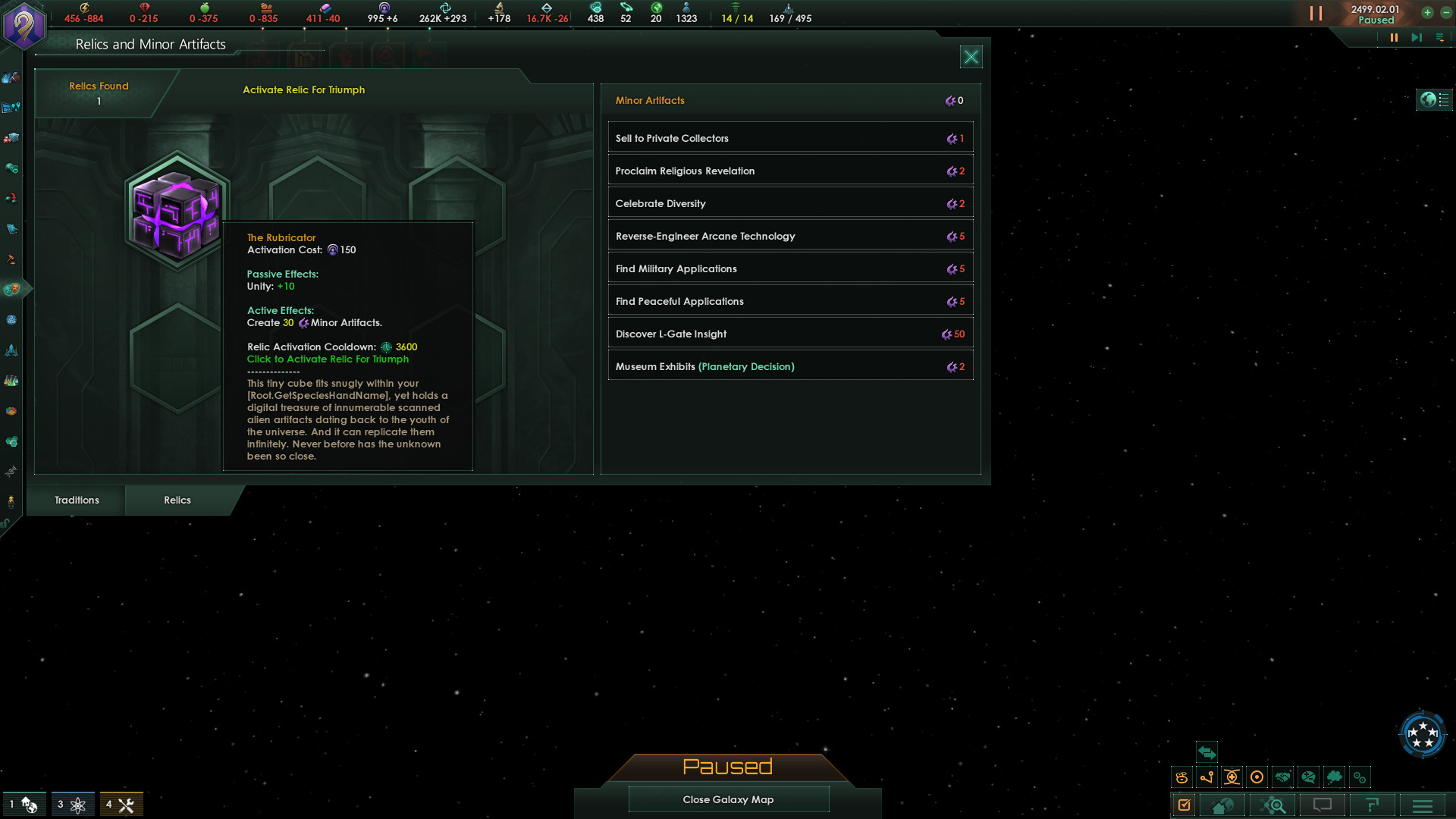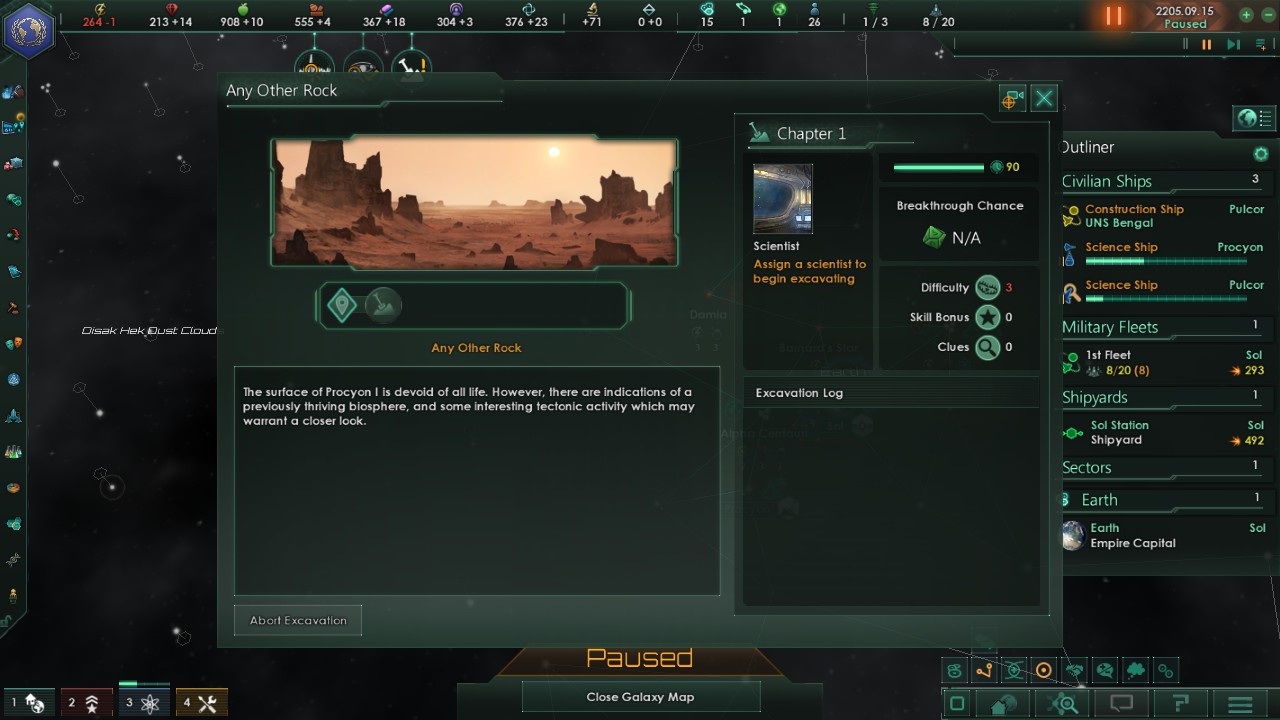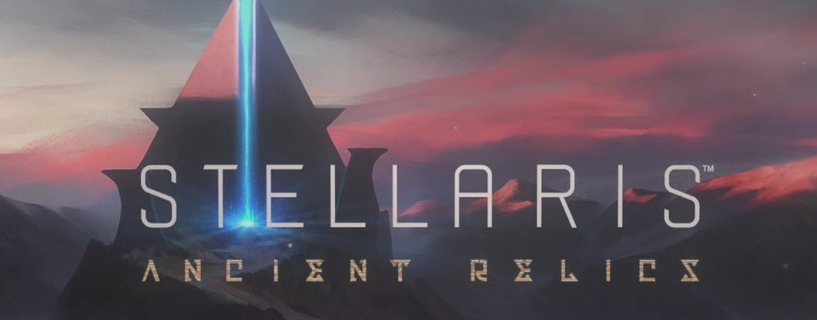Like exploring the remnants of an empire at the height of its decadency, Stellaris’ latest addition showcases the height of one of the best 4X games swept under the passage of time and progress.
Type: Single-player, Multi-player, DLC
Genre: 4X, Grand Strategy
Developer: Paradox Development Studio
Publisher: Paradox Interactive
Release date: 4 June, 2019


If you are familiar with my reviews, then you might mistake this one as a press-release. The simple answer is that there isn’t really much to say about the Ancient Relics Story Pack to convince anyone who isn’t already a die-hard Stellaris fan to get this new addition. Chances are, if you play Stellaris as religiously as the xenophilic empires, you already shelled out for the DLC since you wanted something new, or you’re someone like myself who always waits to get these additions at steep discounts since you know there are always going to be a dozen more in the future.
You might assume this jaded perspective is because Ancient Relics disappointed me, but the reality is the DLC lived up to my expectations for Paradox Interactive games. So in no uncertain terms: Is this DLC worth getting at some point or when put together in a bundle? Absolutely, and if you’re a fanatic for archaeology or developing the research portion of Stellaris, then you might find this addition more favorable than other players. For everyone else, you’ll have to come to your own conclusion on the matter.
History is Hopefully Built on the Succession of Good Ideas
Before we discuss any problems with the business model or the DLC itself, it would be helpful to illustrate what new additions are added to the game. The main component to Ancient Relics is the addition of archaeological systems as well as Relics and Relic Planets that provide statistical benefits or massive resources for trading. There are also two new Precursor Races, the Baol and the Zroni. Finally, besides another four exceptional tracks to what is perhaps one of the best 4X OSTs ever made, there is also another story-focused quest-line to flesh out the lore of Stellaris, which is something that has yet to engage me as much as others.

This sentiment about the quest-line isn’t exclusive to Ancient Relics; with seventy hours into Stellaris, I have yet to see the end of the Leviathan or the Distant Stars story packs. (The only reason I recall the Leviathan one is due to the one or two moments I bumped into the sleeping giants.) You might find my reaction surprising given how much I get engaged with video-game narratives and lore, but that aspect is a bigger issue in 4X games. To me, the story of a game of Stellaris is about the new blunders I will make or the new discoveries I’ll learn from the mechanics themselves. Several quest-chains along with finely crafted lore for the static intergalactic history pales in comparison to creating player-driven memories like the time I tried to assimilate my organic friends into my robot empire, but I ended up killing them all because I didn’t have the proper empire-attributes. Others will have tales of many joke-empires or Imperium of Man fantasies, which makes me wonder how many players enjoy the narrative qualities of these story packs to warrant all the effort Paradox puts into them.
However, the story packs have never been exclusively about the narrative components, and Ancient Relics is no different. For those who have yet to play Stellaris or who may be rusty like myself, the science-aspect of the game mainly involved sending your research ships to scout the galaxy to expand your own territory or to research anomalies and debris to improve your own research. There weren’t any opportunities for science to apply to planetary matters, and the only relics that existed were the Fallen Empires. This story pack addresses that gap in the gameplay itself as planets can now be home to ancient civilization sites and relics, which add more to the game than simply new stuff to research.

Like a chess piece with respect to the overall game, every small piece extends the complexity of the game, even as pieces as small as the pawns. Minor artifacts might add a few percentages to your favor, but what those rewards really do is get players fighting over territory. This result in return will fuel player-driven conflicts of war, diplomacy or land acquisition trades for planets, which are all further gameplay incentives to keep the game engaging. However, it’s the addition of Relics, including former rewards like the Galatron from Leviathan, which will shake up any strategies available in Stellaris.
All of these aspects of Ancient Relics justify getting these new additions for any avid fan of Stellaris, but like the other story packs—or Paradox’s business model—the changes are a lot more subtle in their influence. Part of the problem is that the constant free updates can distract players from understanding the value proposition of the new paid content, which is exactly what I felt was the case from the Tales from the Tiers “expansion” for Tyranny. It wasn’t until three to four hours into my recent game of Stellaris where I started to notice the new artifacts and the related quest-line. Most of my time spent was relearning the colony design system for buildings as the last time I had played was a year ago from some version of 2.2. If you haven’t played any version of Stellaris 2.0, then you also have to contend with the changes to Star Lanes, Star Docks, new Influence and Energy costs, and hundreds of other massive changes. Needless to say, you could call the latest version 3.2 instead of 2.3, and I don’t think most newcomers or returning players would be able to spot the difference.

You Cannot Always See Value; However, You Can Spot Its Absence
The real question to consider for Stellaris is to ask yourself, “At what point while you’re relearning this game should these new paid features be considered, and how do you quantify that aspect that is both fair to the developers as well as to the consumers?” That question is one I cannot answer in any satisfactory manner, and as much as I should find that practice questionable Paradox has always been transparent with their dev-blogs or store descriptions (for the most part.) Whether you want to attribute this practice as deliberate obfuscation of value or the unintended result of keeping a game thriving for so long, I will leave that decision up to you.











This is a really poor review.
“the DLC lived up to my expectations”
“Is this DLC worth getting…Absolutely”
Yet you gave it a pause?
You give 2 paragraphs about the story pack and then the rest of the “review” was nothing more than a commentary of how they keep changing the mechanics of the game which had little to do with the contents of the story pack.
I came here to read about Ancient Relics and find out more about THAT not all this other opinion piece. All in all this gave me no information about the story pack other than you liked it but don’t recommend it?
When you write a review can you ACTUALLY review the item please?
Apologies for the delay as I was handling some real-life matters, but I think there are two matters to clear up.
For starters, scoring systems are arbitrary to me, and I never consider the rating until after I have written the review. Given the fact that the scoring is based on the quality of a game (not DLC), I also try to consider how that translates for smaller content. The actual new content from the Story Pack is so sparse, spread-out over time and interwoven with the latest patches that the only way I could actually review the content was to talk about the patches itself. As a result, I tried explaining that dilemma within the review because other players who haven’t touched Stellaris in some time would feel the same; if I tried just writing about the Story Pack, it would be a list of new statistics for one branch of new mechanics, which I did mention the new additions in this review. In short, the final rating simply came down to the fact that there was nothing broken, objectively wrong or “bad” about the Story Pack, so I gave the rating the lowest “positive” rating to reflect my experience.
Second, and I’m not trying to argue semantics, but I think you’re forgetting the caveat I wrote into that recommendation. “So in no uncertain terms: Is this DLC worth getting at some point or when put together in a bundle? Absolutely[…]” If you want to argue that the price point vs hours spent is something worth condemning, then okay, but I prefer to separate price from the discussion of a game’s/DLC’s quality since people can always purchase the content at the price they believe it is worth.
Even after checking out popular video reviews on the DLC such as Aspec, there weren’t many details missing from my review. The video-creator even stated at the beginning that reviewing Stellaris expansions are tricky because 1) the new mechanics are integrated with free patches and 2) the Story Packs are more light on new content. The only aspect I would have added are the linearity of the stories, but I have never been able to tell what quests are RNG-based and which ones have meaningful decisions, so that point would be lost on me. Also, I don’t own the Megacorps DLC, so I wouldn’t be able to provide any information on previous content or balancing problems.
Ok thanks, I think I understand what you were trying to say a bit better now.
I guess what confused me as well as I don’t see a pause as positive rating, it has more negative connotations to me so it sounded like you were recommending against it at this time.
I guess what I was looking for in the article was how does the addition of this story pack affect your game with the DLC vs Without the DLC.
Putting aside all the stuff about relearning the mechanics that isn’t inherent to this story pack (like the star lanes etc) does finding artifacts give you much of a boost? Would you be in a position where you don’t want to colonize a world as it has an artifact on it or do you want to grab that world quickly before someone else does. See how that could change your strategy? How does the DLC affect your choices?
You kind of touched on this “However, it’s the addition of Relics, including former rewards like the Galatron from Leviathan, which will shake up any strategies available in Stellaris.” but never really explained it.
From what I understand if you managed to unlock a really large ship early on via a quest line that can be quite a game changer so are relics something similar and should be pursued with vigour? Or are they mediocre and can be pretty much ignored?
Whether you own the DLC or not, the Relics and the new archaeology system are added to your game, so the only thing that you really get are the twenty-two story events that come with the DLC. (Like I said, the DLC stuff can get confusing.)
Most minor artifacts just provide you small bonuses, or you can use them to sell for Energy Credits or you can later use them kind of like Edicts. It’s the major artifacts, which include all previous add-ons, that give you the more helpful artifacts, and you can only activate one at a time. If you don’t get the relics, then you will pretty much never get them afterwards; it encourages you to get as many of those relic planets as soon as possible if you want to get them all.
If you want a more detailed list of what they do, the Stellaris Wiki is a good source as I’m sure some people might consider that stuff as spoilers: https://stellaris.paradoxwikis.com/Relics